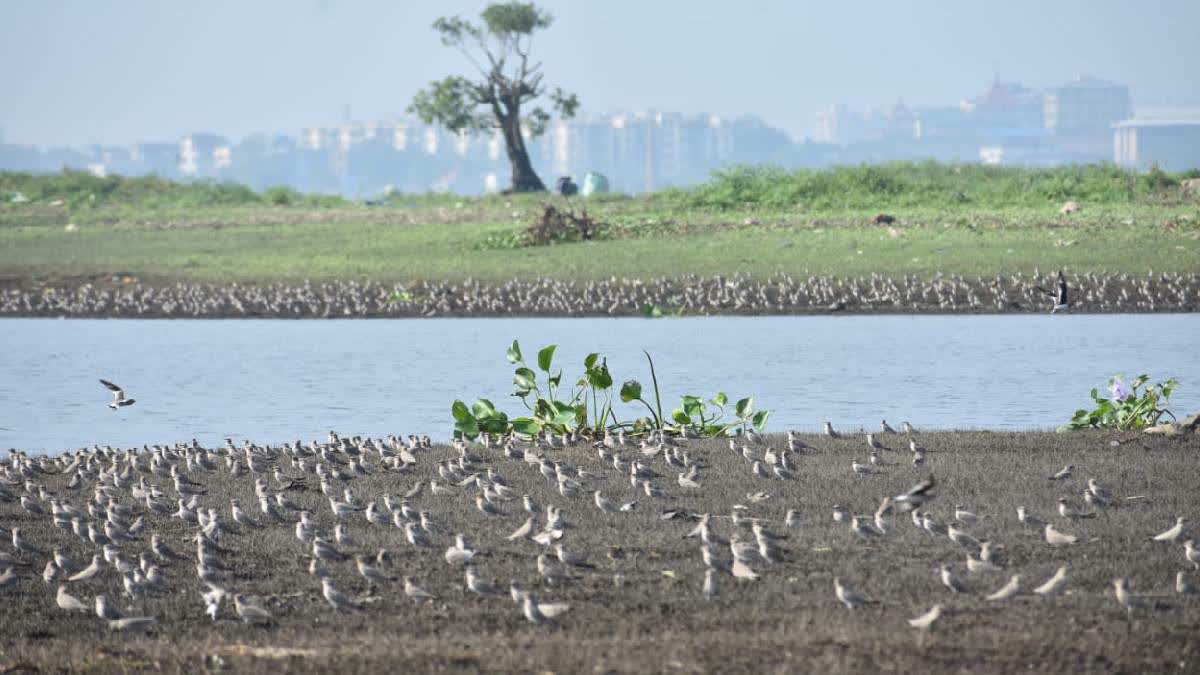Guwahati: Deepor Beel, Assam's lone Ramsar site, is fast losing its vitality and ecological balance.
The situation is turning worse every consecutive year, forcing locals and conservationists to explore if the freshwater lake located near Guwahati will manage to retain its most coveted tag of Ramsar site.
A Ramsar site is a wetland that has been designated as being of international importance under the Ramsar Convention on Wetlands. Assam's Deepor Beel was designated as Ramsar Site in 2002 to undertake conservation measures on the basis of its biological and environmental importance for sustaining a range of aquatic life forms besides 219 species of birds.
Pramod Kalita, a local resident and an individual involved in the conservation of Deepor Beel, said that the beel is losing its ecological balance as the level of pollution has been on a rise.
"Normally several thousands of migratory birds come to Deepor Beel every year during the winters. However, in 2023 we could spot only 11000 migratory birds visiting the Beel, which is concerning. In 2022, there were 28000 birds here," said Kalita while adding that a wetland should be considered internationally important if it regularly supports 20,000 or more water birds. (As per Ramsar Convention of Wetlands, Ramsar, Iran 1971).
The locals still remember Deepor Beel as a serene wetland full of Kohuwa grass which also used to be a lifeline for the people who lives in and around the Deepor Beel. The wetland with its natural resources directly or indirectly supports the people of 14 indigenous villages (1,200 families) with livelihood options. While the freshwater fish is a vital source of protein and income for these communities, the health of these people are also directly dependent on the health of this wetland ecosystem.
"We have been living in this village for generations. The Beel gives us everything from livelihood to fodder for our domestic animals," said Dhaneswar Kalita, a local resident and a fisherman.
Why is Deepor Beel important?
Experts say that the Deepor Beel acts as a natural stormwater reservoir during the monsoon season for Guwahati, an ever-growing city that houses approximately 14 lakh people. The Basistha and Kalmani rivers and local monsoon run-off are the main sources of water to the lake, between May and September. Khonajan channel drains the Beel into the Brahmaputra river, 5 km to the north. The Beel has a perennial water spread area of about 10.1 square km, which extends up to 40.1 square km during floods.
Deepor Beel is the main storage basin for Guwahati's drainage system during the monsoon season. The lake's water level drops from about four metres during the monsoon to about one metre during the dry season.
Besides the drainage system, the freshwater lake is also a stopover for the residents of Guwahati for fresh air. The Beel also attracts tourists from different parts of the country and abroad while visiting or passing across Guwahati. It is also a breeding ground for at least 200 species of birds including over 70 varieties of migratory birds.
What is the status of Deepor Beel now?
